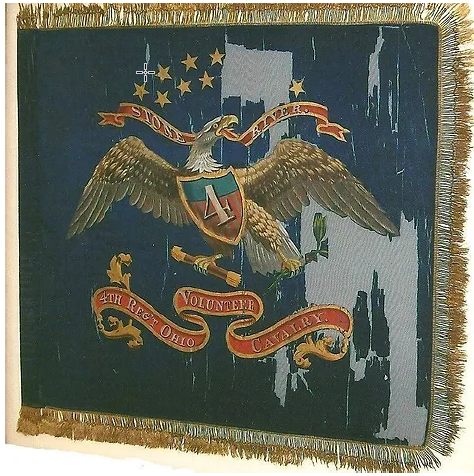Welcome to our site
4th Ohio Volunteer Cavalry Descendants Association
The History of the 4th Ohio Volunteer Cavalry
The 4th Ohio Volunteer Cavalry [hereinafter referred to as 4th OVC] was organized on August 5, 1861, under Colonel John Kennett, mainly from the Ohio and Kentucky counties surrounding Cincinnati, OH, but with many recruits also from the areas around Allen and Lawrence counties, OH to the north and east of Cincinnati, respectively. Following initial training at Camp Gurley from August to November 1861 the regiment was transferred to Camp Dennison on November 23, 1861, where training was completed. On December 5, 1861, it was sent to Jeffersonville, IN where on December 27, 1861, orders were received to join Brigadier General Ormsby Mitchel’s division at Bacon Creek (now Bonnieville), KY.
Use the links in the header or footer to learn more about our organization:
- About Us – details about how our organization was formed and our purpose
- By-Laws – the rules that govern our organization
- History of 4th OVC – the full history of the 4th OVC
- Events – a list of reunions and other events in which the organization participates
- Membership – download an application form to join our organization
- Resources – download spreadsheets with a full roster, POWs, Wounded, and more
- Men of the 4th OVC – a gallery of pictures of the men who fought in the 4th OVC
- Biographies – download PDF biographies of men who fought in the 4th OVC
- Pictures – A gallery of pictures from past events
- Magazine – download sample copies of our magazine
Click on the Facebook link below to view our page
Pages
Social
